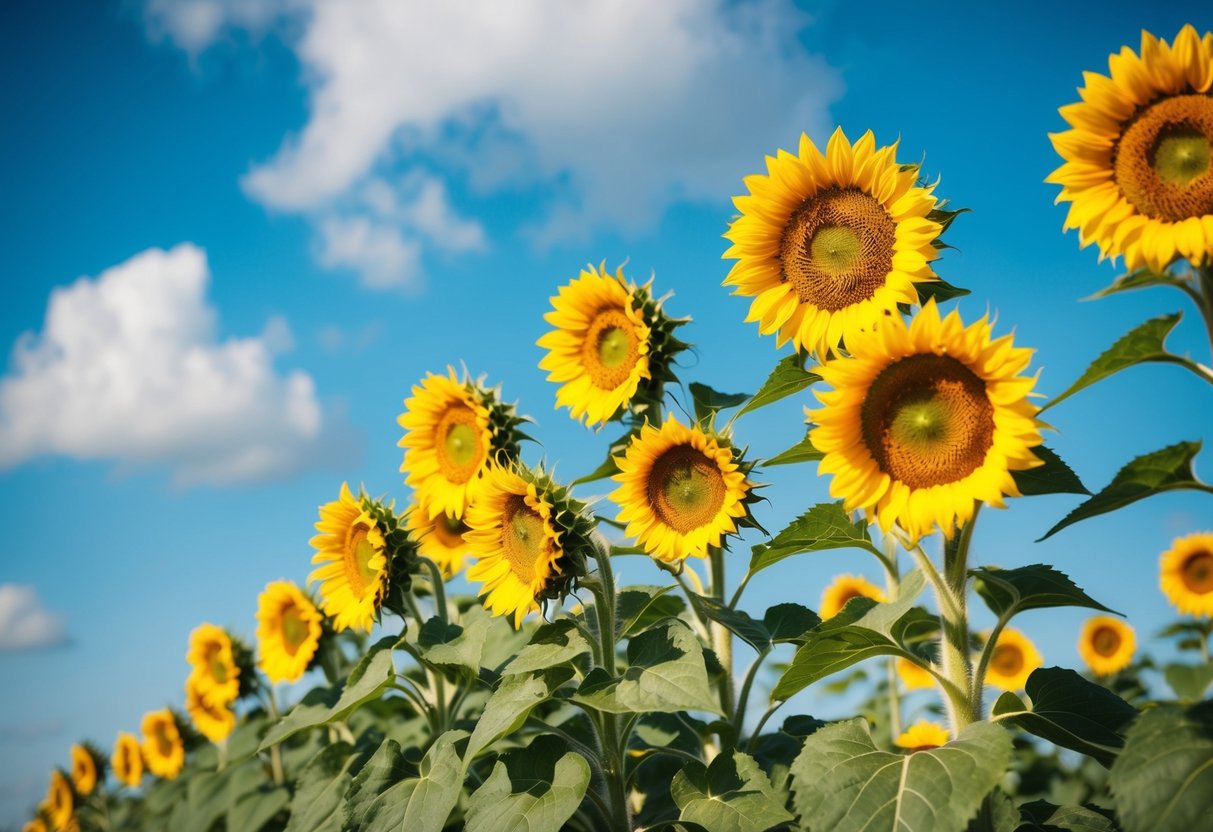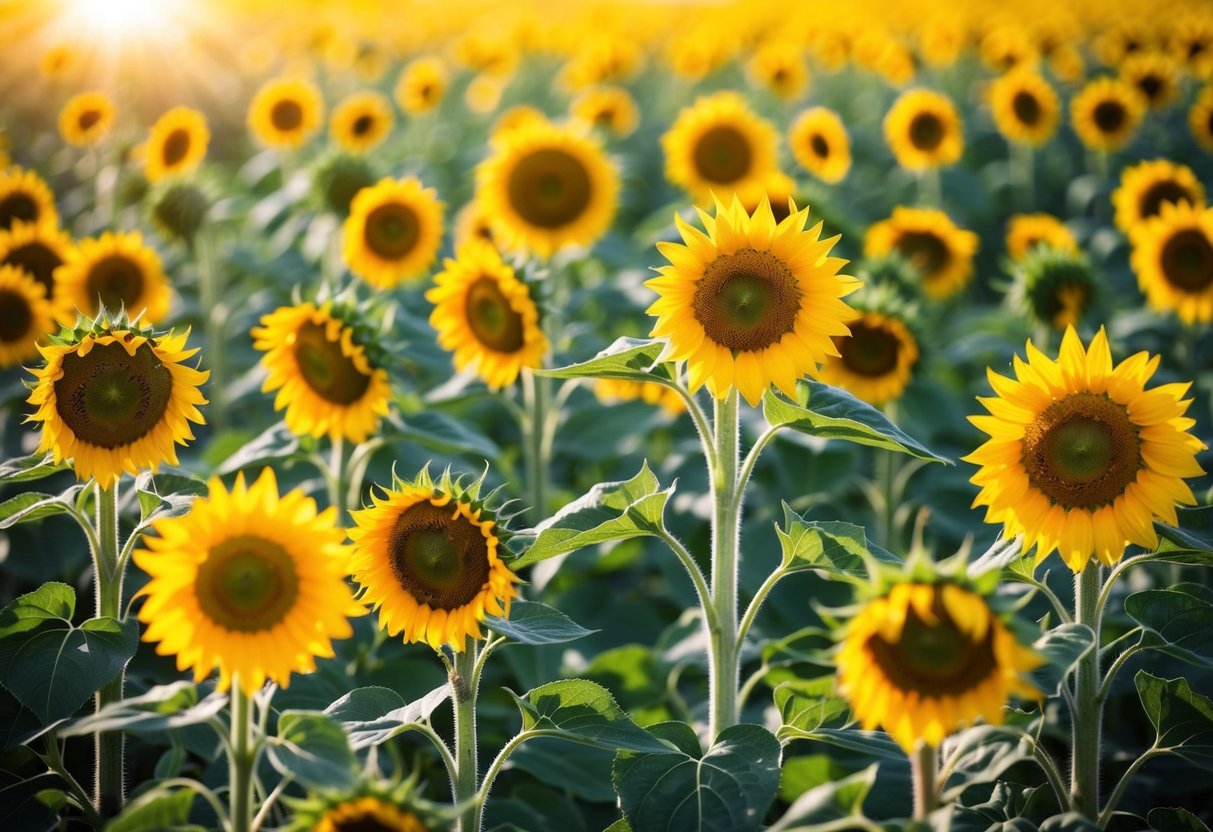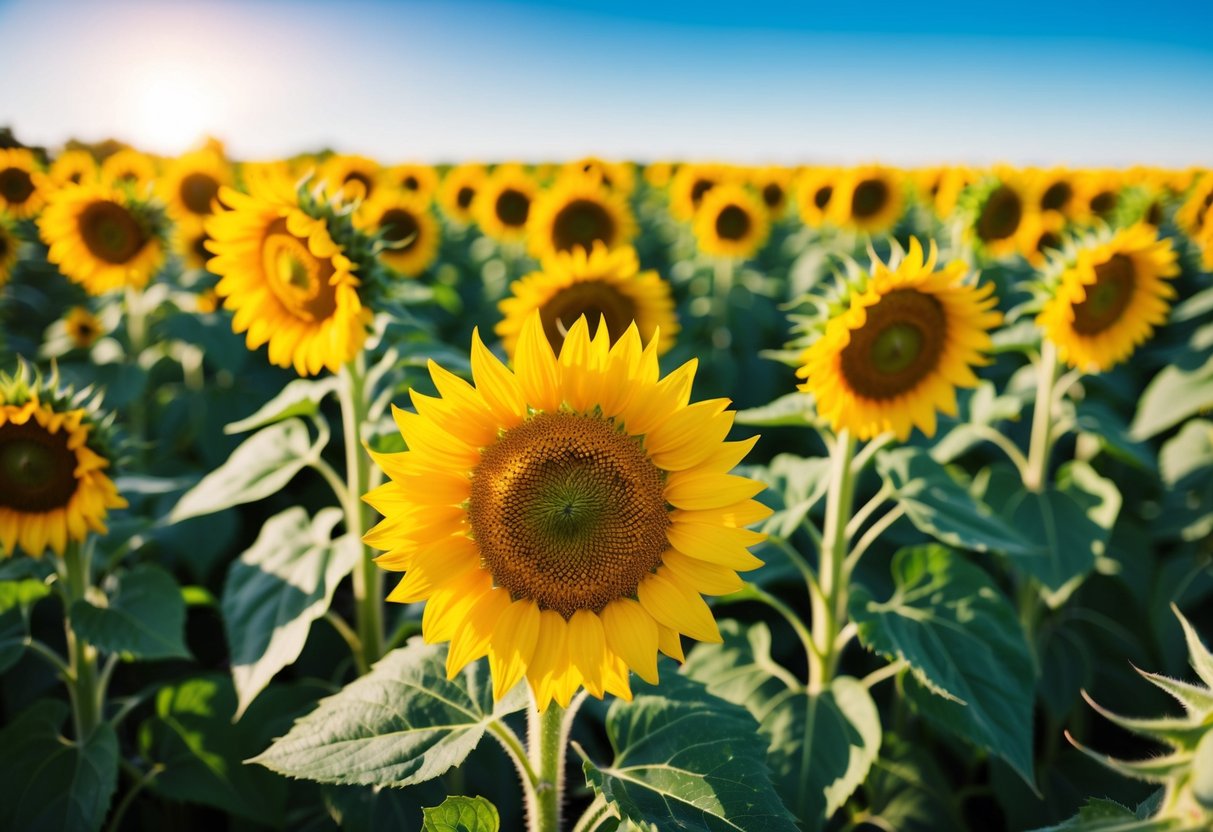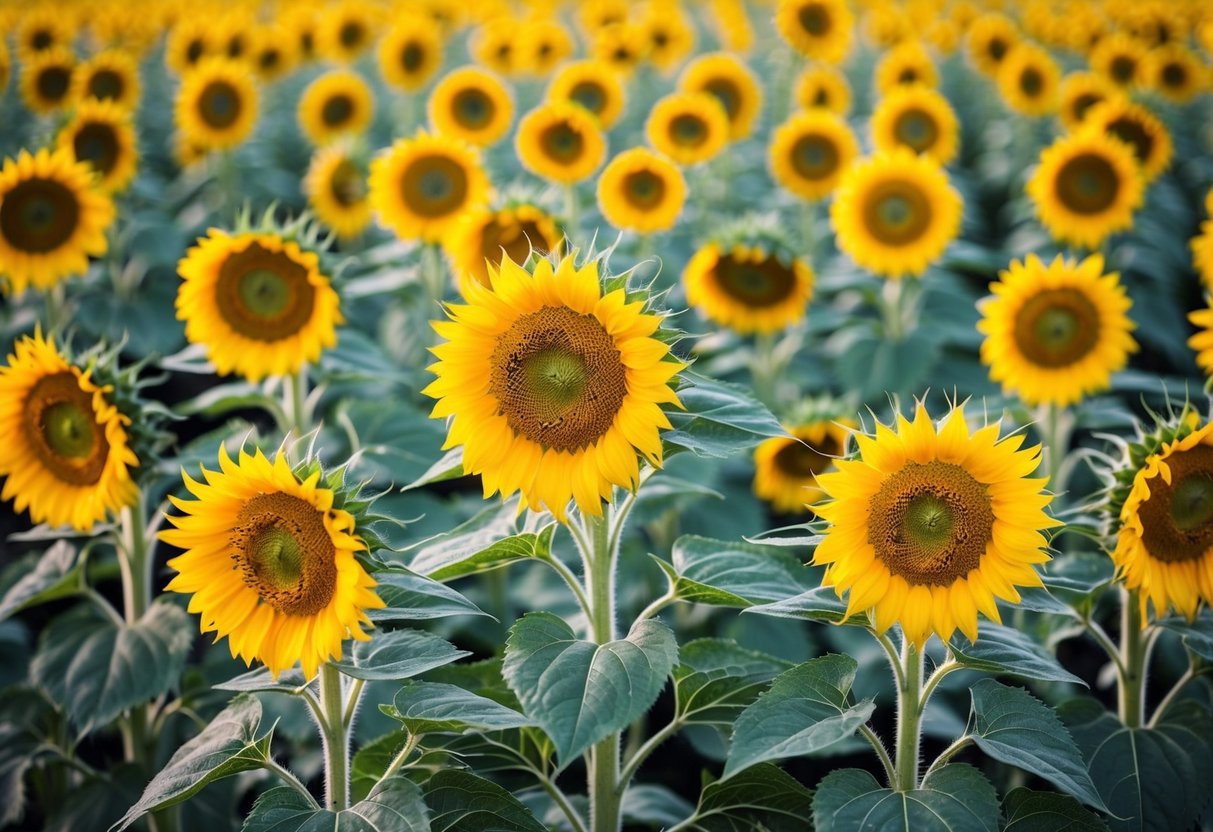Do Sunflowers Bloom Again Next Year? Discover Their Lifecycle
Are you curious about whether sunflowers bloom again next year? Some varieties of sunflowers can return the following year, while others can’t. This distinction is pretty important if you’re planning your garden.

Annual sunflowers are planted each year. They offer big, bright blooms but require replanting. After they bloom, you’ll have the chance to collect seeds. These seeds not only make great snacks but also can be replanted, allowing their beauty to return.
If you prefer a low-maintenance option, perennial sunflowers might be your choice. These sunflowers come back year after year if you give them proper care. They bloom every summer, providing a consistent splash of color to your garden. Learn more about the types of sunflowers and their blooming patterns at The Spruce.
Understanding Sunflower Types

Sunflowers come in various types, classified mainly into annuals and perennials. Knowing the differences helps you choose the right kind for your garden.
Distinguishing Perennial and Annual Sunflowers
Annual sunflowers, like Helianthus annuus, complete their life cycle in one growing season. You need to replant them each year. These sunflowers are famous for their tall stems and large blooms, often used in cut flower arrangements.
On the other hand, perennial sunflowers come back year after year. Types like the Maximilian sunflower and swamp sunflower grow from the same roots each spring. They need less planting effort because they return automatically, making them a convenient choice for persistent blooms. With these two categories, you can enjoy sunflowers that either impress for a short time or return annually to beautify your garden.
Popular Sunflower Varieties
Sunflowers boast a wide range of varieties, each with unique features. The giant sunflower, known for its impressive height, can reach heights of 12-15 feet, making a bold statement in any garden.
The beach sunflower, ideal for coastal areas, offers bright colors and grows well in sandy soils. If you’re looking for something different, the western sunflower and ashy sunflower provide eye-catching alternatives with their unique petal structures.
These popular varieties offer diverse options for gardeners, whether you’re growing sunflowers for their size, adaptability, or aesthetic appeal. Using these options, you can customize your garden’s look to match your style and environment.
Sunflower Life Cycle

Sunflowers go through several distinct phases during their growth. They start as tiny seeds and eventually become impressive blooms. Along the way, they rely on pollinators to form new seeds for the next generation. After blooming, the seeds can be harvested.
From Seed to Bloom
Sunflower seeds are the beginning of the plant’s life cycle. These seeds need soil temperatures of at least 60°F to start germinating. You might notice that germination is the first step. As they sprout, the seedlings enter the vegetative phase, growing strong stems and large leaves. These leaves use photosynthesis to help the plant grow bigger.
Once established, the sunflower moves into the reproductive phase. During this time, the plant develops a large bud. This bud eventually transforms into a flower. The blooming phase then arrives, when the sunflower shows off bright yellow petals. This entire process, from planting seeds to witnessing the bloom, can take about 80 to 120 days.
The Role of Pollinators
Pollinators play a crucial role in the life cycle of sunflowers. Bees and other insects visit the blooms, searching for nectar. While they move from flower to flower, they transfer pollen. This pollination is essential because it leads to the formation of seeds. Without it, the sunflower wouldn’t produce seeds that can grow new plants.
Not only do pollinators help in seed formation, but they also help the sunflower thrive. By ensuring the flowering phase is successful, these tiny helpers support future generations of sunflowers. If you’re growing sunflowers, make sure the area attracts pollinators to get the best seed production from your plants.
Post-Bloom: Seeds and Harvesting
Once the sunflower heads have bloomed, the life cycle progresses to the next stages. The petals will start to wilt and fall, revealing the seed heads underneath. Seeds will begin to mature and ripen. Sunflower seeds become ready for harvesting usually when the back of the seed head turns brown and dry. You should cut the head and allow it to dry further if needed.
Harvesting these seeds allows the cycle to begin anew or provides a source of food. Seeds can be used for snacking, planting, or as bird feed. After harvesting, you might leave some seeds in the ground, which could result in new blooms the following year.
Gardening Tips for Sunflowers

Growing sunflowers is rewarding and simple. You’ll want to pay special attention to the soil, sunlight, and watering to help them thrive. Each aspect ensures your sunflowers grow tall and bright.
Soil Preferences and Planting Techniques
Start with well-drained soil for your sunflowers. They love sandy soil types as these allow water to drain efficiently, reducing the risk of root rot. You should plant sunflower seeds around three weeks after the last frost date when the soil has warmed to at least 60 °F. If your area has unpredictable spring weather, waiting a bit longer might be wise.
Planting the seeds 1 inch deep and about 6 inches apart will give them enough room to grow. You can thin them out later to allow more space between each plant if needed. Minimal care is needed once they start growing, but keeping the area weed-free helps seedlings compete for nutrients.
Watering and Fertilizer Usage
Sunflowers need consistent watering, especially during their growth phase. Water them deeply about once or twice a week, depending on your local climate. Avoid frequent, shallow watering as it leads to weak root development. When the top inch of soil feels dry, it’s time to water again.
Fertilizer adds an extra boost to your sunflowers. Use a balanced, slow-release fertilizer when planting and then once a month during the growing season. Applying too much fertilizer can cause tall, lanky plants, so be mindful not to overdo it. Your sunflowers prefer a light touch when it comes to feeding.
Sunlight and Climate Conditions
These cheerful flowers require full sun, at least six to eight hours of sunlight daily. Position your sunflowers in a spot with bright, direct light for the best flowering. They’re quite adaptable and can thrive in a variety of climates, though they do best in warm conditions.
High winds can be problematic for taller varieties. Consider planting them near a fence or adding stakes for additional support. By placing sunflowers in an optimal spot and giving them adequate support, you ensure they grow strong and beautiful each year.
Sunflower Annual Reblooming

Sunflowers are bright and cheerful plants that many gardeners love. They usually produce large, yellow blooms that catch the eye and add color to any garden.
Most sunflowers you plant are annuals. This means they complete their life cycle in one season. So, they will not come back the next year on their own. You’ll need to plant new seeds each spring to enjoy their blooms again.
For annual sunflowers, the process begins with sowing seeds in warm soil. A soil temperature of at least 60°F helps them germinate. It’s best to wait about three weeks after the last frost to plant.
To enjoy sunflowers year after year without replanting, you can let them self-seed. This involves leaving the heads on the plants until they drop seeds naturally. Be ready for a less controlled garden look, though!
If consistency and replanting aren’t your style, consider choosing another type. Perennial sunflowers can regrow yearly from the same root system, but they may be less dramatic in appearance compared to their annual cousins with the huge yellow blooms.
Sunflowers and Biodiversity

Sunflowers play an important role in supporting biodiversity. They provide food and shelter for many wildlife species and can be a key element in creating a diverse and healthy garden ecosystem.
Benefits to Wildlife and Ecosystems
Sunflowers attract a variety of pollinators, including bees and butterflies, who are essential for pollination. Their large, vibrant blooms are inviting landing pads for these creatures. The seeds sunflowers produce are a food source for birds and small mammals, supporting local wildlife.
Sunflowers can improve soil quality. They help in breaking up compacted soil and can even draw contaminants out of the ground, making your garden healthier over time. Additionally, they serve as a natural windbreak, protecting other plants in your garden.
Cultivating a Biodiverse Garden with Sunflowers
To cultivate a biodiverse garden, plant different sunflower varieties. These can include tall types with large blossoms or dwarf varieties perfect for smaller spaces. Each type supports different wildlife, increasing biodiversity.
Integrate sunflowers with other native plants to provide a range of habitats and resources. This mix will encourage more wildlife, such as beneficial insects and birds.
Use sunflowers to create layers in your garden design, offering shelter and nesting sites.
Rotate sunflower plantings with other crops each year. This practice helps prevent soil depletion and maintains a healthy ecosystem in your garden.







